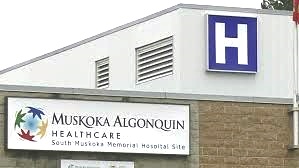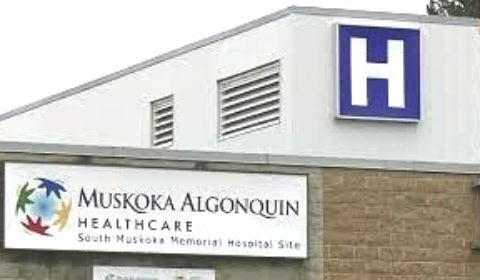You choose 1 of 3 hospital models you want
Mark Clairmont | TODAY.COM
MUSKOKA — Under heat to come clean on more details about the future of hospitals in the region, Muskoka Algonquin Healthcare (MAHC) has offered more details of programs and services proposed in each of the models.

In a release Friday, April 13, they say that “through many workshops with clinicians and various other stakeholders, the models have evolved from high-level concepts to more in-depth descriptions of the programs and services that are proposed in each of the models.”
That’s according to Cameron Renwick, chair of the Capital Plan Development Task Force.
“No decisions on a preferred model have been made,” he says.
But, he says throughout the process, “we have received significant input that has informed the models.
“Many people have been involved in finalizing the programs and services proposed in each model, including MAHC leaders, staff and physicians, community providers, and municipalities.
“I want to assure everyone the task force is listening, and recognizes that community engagement has an important role in the evaluation of the models. I also want to remind everyone this is high-level planning for 10 to 15 years or more.”
Descriptions of the finalized proposed models are published in the Planning for the Future section of theMAHC website, including a Models on a Page document describing the programs and services proposed in each of three models at a glance and in greater detail.
“The Ministry also directed that our planning work explore and demonstrate the potential shift of appropriate services from hospital to community,” adds Renwick. “To meet that expectation, the task force has identified services that are currently provided in the hospital that could potentially be community-based in the future. This would only be possible if the greater health care system integration supported this transition.”
The task force has also approved the evaluation criteria that community feedback also helped shape, says Renwick in the release.
He addes the task force will apply a variety of data such as projections, health care studies, and reports on land-use planning, economic impact, and costs to build and operate as part of their evaluation of the three models.
Once the task force determines it has collected all of the required information, members will complete an evaluation of the three different models to assist them in arriving at a preferred service delivery model to recommend to the MAHC board of directors.
For more information about MAHC’s future planning work, visit www.mahc.ca/planning-for-the-future.
See details below: Or go to http://www.mahc.ca/en/about/proposed-models.asp
Proposed Models (Stage 1)
In approving MAHC to move to the next stage in the planning process (Stage 1), the Ministry directed MAHC to continue exploration of the work previously considered at the Pre-Capital Submission stage.
MAHC’s Capital Plan Development Task Force, which is overseeing MAHC’s Stage 1 planning, has further refined and evolved three models in consultation with hospital clinicians and stakeholders including community health care providers, municipalities and others. The following is a summary of the programs and services to be provided in each of the models under consideration by the task force. Greater detail is available in the Models on a Page. Included in the Part A evaluation is a high-level siting exploration. Based on the task force’s understanding of the three models, could our current sites accommodate the future needs, or would alternatives need to be explored. Once a preferred model is selected, in the Part B work over the summer the options for how to best deliver the model will be studied in much greater detail, with criteria established to help select the preferred approach.
Two Acute Sites
The Two Acute Sites model proposes to maintain acute care beds and Emergency Depts., general surgery, obstetrics and intensive care in two sites. These would be supported by other core diagnostic services and allied health and support services in both sites. Specialty surgeries and programs like Chemotherapy and Complex Continuing Care that are currently single sited are proposed to continue to be in one site only. The future model also proposes to add a Stroke Rehabilitation Unit and MRI capabilities at one site.
Inpatient Site/Outpatient Site
The Inpatient Site/Outpatient Site model proposes to include Emergency Depts. at two sites and to separate outpatient and inpatient services between two sites. The Inpatient site would include all hospital beds, surgical services, obstetrics, and intensive care, and would be supported by other core diagnostic services and allied health and support services in both sites. The Inpatient site also proposes the addition of a Stroke Rehabilitation Unit and MRI capabilities. The Outpatient site would include services that do not require an overnight stay in hospital like endoscopies, x-rays and other diagnostic imaging, and services like chemotherapy and dialysis.
One Site
The One Site model proposes to provide all programs and services on a single site, including the addition of a Stroke Rehabilitation Unit and MRI capabilities.
